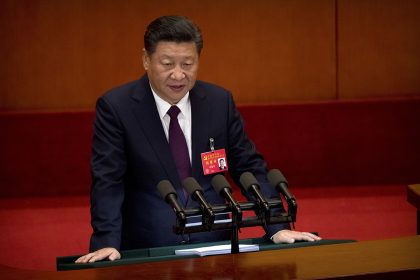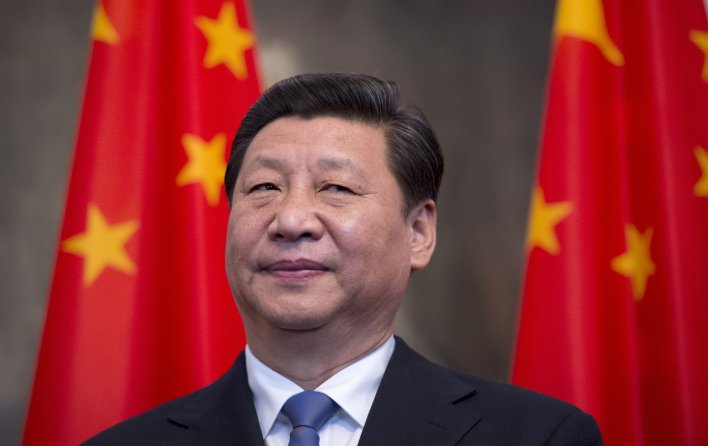[ad_1]
As India announced on Monday new skirmishes with Chinese troops took place at Nathu La, in the state of Sikkim, Beijing declared it would launch its third aircraft carrier this year. In the past few days, PLA (People’s Liberation Army) jet fighters and submarines violated Taiwan’s airspace and waters. Has China become more aggressive, marching towards a military conflict with its neighbors?
Is this simply Western propaganda or is China under siege? If so, will China become cordoned off? Many in China directly or indirectly voice this concern, and point to recent US policies vis-Ã -vis Beijing. If actual war is no longer impossible, where would it occur?
But to understand the situation, we have to take a step back.
The US as a Lubricant
In 2007 I noted that China was a prisoner of its own geography, restricted by some 20 countries and territories that bound its policies. In this situation, security in a very broad sense was provided by the United States, which was the political and military lubricant of the region.
Without the American lubricant, the Chinese situation could deteriorate. Not overnight, perhaps, but eventually since every single country near China has issues with its rise.
After the 2008 financial crisis, China gradually became oblivious to this predicament. And after 2009, the United States gradually decreased the amount of lubricant in China’s political and strategic neighborhood. The result, in the next decade, was that relations around China became increasingly strained. All the issues that had been hidden or ironed out by US involvement came to the surface.
What China should have done was carry on using the US lubricant and increase its own lubricant. In time, the lubricant proportions could have been inverted. This didn’t happen and now it’s too late.
China decided the best course of action was to launch the Belt and Road Initiative (BRI). The BRI is many things, including an attempt to create its own political lubricant. The underlying idea was to turn its geographical quandary to its advantage, stretching its reach into Europe and creating a Eurasian bridge.
However, the idea was perhaps poorly conceived. The Belt and Road Initiative was, using the same analogy, substituting the American lubricant for the Chinese one overnight in the same engine (i.e., the global political situation). The result was that the old lubricant stopped working with increasing speed, and the new lubricant was not working well or fast enough. In a nutshell, this is the predicament we are now in.
China’s political and soft-power muscle is no match for the former political and strategic strength of the US. And the US doesn’t provide the same utility it used to provide China 15 years ago.
In this situation, friction and conflict increase and war could explode anywhere.
A Chinese loop
China is caught in a loop. Without American lubricant, friction increases leading China to make more weapons to safeguard itself. Neighbors see the country as a threat and arm themselves accordingly – a vicious circle. The end result is that China now has flashpoints all along its borders. With Taiwan, Japan, India, the South China Sea, and possibly also Mongolia and some of the former Soviet Central Asian “stans.â€
As for Russia, border friction is hidden behind the veil of the new “entente cordiale†between Beijing and Moscow. Yet both sides know that this understanding could come undone overnight, as both countries have a long history of turning on each other.
Then, if there is to be a war, the strategic solution for China would be to wage it where it would be most convenient. The real Grand Strategy for China would be to avoid war, as Beijing would suffer badly, win or lose. China’s astounding development over the last 40 years is a result of relative peace – entering a world of increased tension is a leap into the unknown. Yet, some may argue that a time of increased tensions could encourage a domestic agenda to bring greater internal order in China and among Chinese adversaries. If so, the increased tensions might have some advantages.
Where could a conflict flare up? Here’s a speculative list.
One of the main possibilities is Taiwan. In the past months there have been growing tensions because, on the one hand, Taiwan authorities may see this as a golden opportunity to gain more international recognition, beef up political and military independence, and move away from the drift toward unification with mainland China.
Conversely, China, concerned over these “splittists,†might try to scare Taiwan into submission. These scare tactics could easily evolve into military action. If so, the US, and perhaps Japan and other countries may get involved due to fears that China’s control over Taiwan and the Taiwan Strait would dramatically change the balance of power in the region.
Another flashpoint is the Senkaku Islands – the group of rocks and islands claimed by both China and Japan. For almost two decades, tempers have gone up and down over the island chain. It’s a dangerous situation: a small error by Japanese or Chinese forces could spiral into military conflict.
The South China Sea presents a similar scenario only compounded by greater possibilities. China contests the waters with six neighboring countries and territories as well as the US and other Western forces.
Control over that corner of the ocean is crucial for global trade. Some 40% of global trade traverses the South China Sea, plus the majority of import-exports for Japan and South Korea. For China, it is an issue of national “face†because losing that part of the world might trigger a domino effect that causes it to lose more territories, giving up the Senkakus to Japan or Taiwan. The growing presence of navies and air forces from all over the world could lead to an escalation.
Another important flash point is the border between China and India. India has a 60-year-old open wound suffered when it lost a war with China. Logistics on both sides of the frontier have been improving. China has railways and highways that link the border to the industrial heartland of China. India has improved its weaker position there, and it now has greater support from a number of countries, including the US, Japan, and Vietnam.
Here the issue is extremely complicated. Also, there could be a temptation for Pakistan to use a flaring of hostilities between China and India to start a war with India on the western border. On the other hand, India may be drawn to prove its mettle and its loyalty to the United States and Japan by starting a war there, as China started a war with Vietnam in 1979.
In return for its participation in this war, although it was a military failure, China received a bounty of benefits from America, including a green light for technological transfers and low tariffs for export to the United States. These benefits started the industrial revolution and development of China. This snowballed into the first moment of globalization, and brought China where it is presently.
Now India may want to emulate that experience, and no matter if it wins or loses a military engagement with China, India may look for high-level rewards from the United States and the Western world.
India could be better off than China in collecting the benefits of limited war because India is a democracy, has an Anglo-Saxon legal system, and its local elites are fluent in English. Its population is the same size as China’s, but much younger, and therefore with greater potential. India could then be, thanks to a war, a China on steroids, plus more easily integrated into the Western world.
Other flash points not to be underestimated could be Mongolia or Kazakhstan, which have a history of suspicion of China. Win or lose, fights there could benefit China by scaring other neighboring countries into order from the American point of view or scaring these countries into a tighter embrace with the US. For these countries the incentive would be to get away from the vice between Russia and China and find some level of autonomy.
Another flash point is the old situation with North Korea, where the Kim dynasty is looking for the limelight and hopes to garner dividends from heightened tension on the peninsula, while being restrained by China from time to time.
Direct or proxy war
In almost all of these scenarios, China is involved directly. That is, in the case of fighting with India, the navy, air force, and land forces from China could be directly involved. Conversely, forces from the US could be marginally tangled or keep aloof, waiting for the dividends of the fight.
In one scenario, the positions would be reversed and the US could fall into a quagmire, while China’s forces might only be marginally involved. That scenario is in North Korea. History would repeat itself here: The 1950 Korean war triggered the full-fledged “cold†conflict between the USSR, China, and its allies against the US.
Now Chinese strategists might decide that if war is impossible to avoid, it would be better to have a conflict starting on the Korean peninsula, where China’s forces can keep a distance and watch how the US and its allies perform. Politically, a war in Korea would be extremely sensitive because in all these scenarios South Korea tries to keep a political balance between the US and China.
Of course, this balance doesn’t necessarily amount to neutrality or siding with China. But so far Seoul has been less militarily and politically aggressive toward China than other neighboring countries. A war in the Korean peninsula would necessarily change the position of South Korea, and China would lose practically an important point of reference in the region.
Conversely, from the point of view of the US, it would be better if China tripped on a wire in one of the other areas, where the American military wouldn’t be caught so directly.
There is also another possible repeat of the old Cold War scenario – a proxy war between China and the US in a third country. For instance, Iran could be encouraged or feel encouraged to start a direct or indirect conflict with some of its neighbors that side with the US.
If that scenario unfolds, proxy wars could start all over the world. Interests of China and the US and the Western world could collide and a number of countries far from China have been openly sympathetic to Beijing could. be drawn into the conflict. Nations like Cuba or Venezuela, which are often hostile to the US, but usually do not take sides, could get involved. This could expand the space of conflict to every corner of the planet.
There is no end to this thinking. All in all, if the logic of war is not drastically removed from the equation, if a creative new solution is not found, the slide into military action could increase. With no political brakes in place, as no side admits officially there is a Cold War going on, the possibility of great errors could become very likely. This is bad news.
The good news is that no shot has been fired yet, and there is still time to shelve the guns, but something big and creative must take place.
This story first appeared on the Settimana News website and is republished with permission. To see the original version, click here.
[ad_2]













